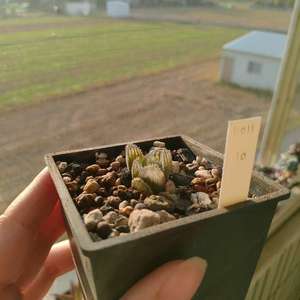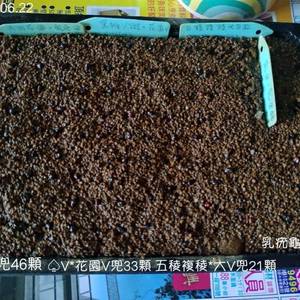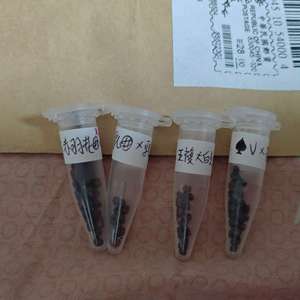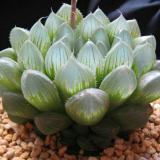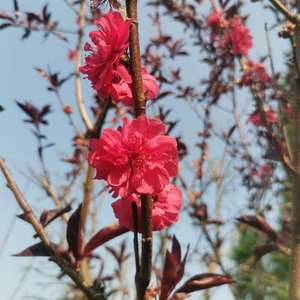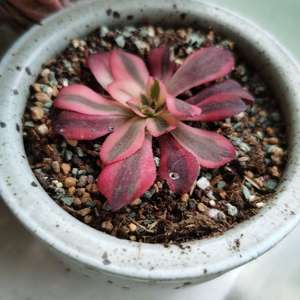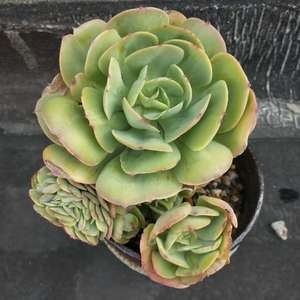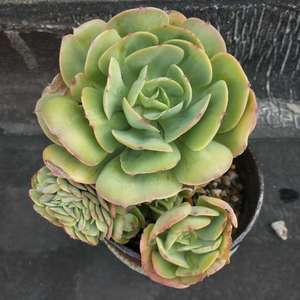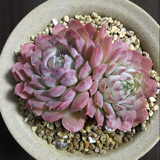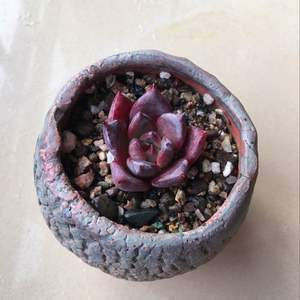文章
毛富平 13088017235
2025年03月27日

人工种植纱布小灰藓
工程绿化,私家花园必备
清幽细腻,65/平
<img src="1000826520_1000056611_1743064122.jpg">人工种植纱布星星藓
工程绿化,私家花园必备
耐晒耐高温,75/平
<img src="1000826521_1000056611_1743064122.jpg">
工程绿化,私家花园必备
清幽细腻,65/平
<img src="1000826520_1000056611_1743064122.jpg">人工种植纱布星星藓
工程绿化,私家花园必备
耐晒耐高温,75/平
<img src="1000826521_1000056611_1743064122.jpg">
0
0
文章
Miss Chen
2021年07月01日

Agave plants (Agave spp.) generally are succulents with large leaves that end in spiny tips. There's a lot of variety in the agave genus. There are the large, stiff specimens that can grow to 10 feet or more in height and width. And there are the small dish-sized agaves, as well as a few agave species with soft leaves and no spines. Agave foliage tends toward a blue-green in hardier varieties and a gray-green in warm-climate varieties. There are also some that are variegated with gold or white markings.
It's typically best to plant this slow-growing succulent in the spring or early fall. When agave matures after several years or even several decades, a tall flower stalk often grows out of the plant’s center. The flowers are bell-shaped and long-lasting in shades of white, yellow, and green. For most agave species, once the flowers produce berry seed pods, the plant dies.
Botanical Name Agave
Common Name Agave, century plant
Plant Type Perennial succulent
Mature Size Different varieties average 1 to 20 feet tall and 1 to 10 feet wide.
Sun Exposure Full sun
Soil Type Sandy or rocky, dry, well-draining
Soil pH 6.6 to 6.8
Bloom Time Most plants only bloom once in their lifetime.
Flower Color Green, white, yellow
Hardiness Zones 5 to 11
Native Area Hot, arid regions of the Americas; also some tropical areas
How to Grow Agave
Agaves are grown for their dramatic foliage, not their flowers. One large agave is all you need to make a sculptural focal point in the garden. Just make sure there is plenty of room to walk around it, so no one accidentally brushes against the spiny tips. Agaves also can make a nice border grouping and are a textural contrast with other plants. Pairing them with ornamental grasses softens their hard edges. Plus, small agave species are excellent for containers, indoors or outside.
Agaves thrive on neglect. The key is to make sure they have well-draining soil and ample sunlight. When grown in an environment they like, they need very little supplemental care from you.
Light
Agave plants prefer a spot with full sun, but they can tolerate a little shade. The hotter the climate is, the more shade they can handle.
Soil
Agave plants will tolerate any well-draining soil, but their preference is rocky or sandy soil. Poor soil drainage can lead to root rot, which can kill a plant.
Water
Mature agave plants are very drought tolerant. You generally only need to water them if you've had a long stretch without rainfall and the soil is completely dry. However, when you are first establishing a plant, water it every four or five days for the first month. Then, water once a week, gradually spacing watering to every other week, depending on rainfall.
Temperature and Humidity
The majority of agave plants can't tolerate frost and only can grow as far north as USDA growing zones 8 or 9. But there are some, such as Agave parryi, that are reliably perennial to zone 5. Moreover, most agaves prefer a climate with low humidity. High humidity can lead to crown rot on a plant.
Fertilizer
Feeding typically isn't necessary for agave plants. In fact, feeding encourages flowering, which you don’t want to happen too soon because most agave plants die after flowering.
Growing Agave in Containers
As with many succulent plants, agaves have shallow roots. So you can grow them in a shallow container because they don’t need much soil. Just make sure the container can anchor the weight of the plant. Use a well-draining potting mix made for succulents. Water the container about once a week in the summer and monthly in the winter. Wait until the surface of the soil is dry before watering.
Plan to repot your agave plant every couple of years with new soil. If the pot is overcrowded with roots, go ahead and cut the roots back. Then, give the plant a week or so to adjust before you water it again.
Common Pests and Diseases
Agaves generally have very few problems with pests and diseases. However, the agave snout weevil can burrow into a plant’s center to lay its eggs, causing the plant to collapse. Unfortunately, you probably won’t notice this until it’s too late to save the plant. So instead remove the plant to avoid the pests spreading to any other agaves you might have.
Varieties of Agave
There are many agave species that range in size and appearance, including:
Agave attenuata: This is a popular spineless variety, also known as the foxtail or dragon-tree agave. It grows around 4 to 5 feet tall and a bit wider.
Agave parviflora: Its leaves have white markings and curling filaments that give it a hairy look. It only gets about 6 inches tall and blooms in six to eight years with green flowers.
Agave tequilana azul: Weber's blue agave is used to make tequila, but it is also a very attractive garden plant, reaching upward of 6 feet tall and flowering in six to eight years with yellow blooms.
Agave victoria-reginae: As this plant matures its broad leaves cup inward, forming a dome. It reaches a height of about a foot, and cream flowers appear in 20 to 30 years.
It's typically best to plant this slow-growing succulent in the spring or early fall. When agave matures after several years or even several decades, a tall flower stalk often grows out of the plant’s center. The flowers are bell-shaped and long-lasting in shades of white, yellow, and green. For most agave species, once the flowers produce berry seed pods, the plant dies.
Botanical Name Agave
Common Name Agave, century plant
Plant Type Perennial succulent
Mature Size Different varieties average 1 to 20 feet tall and 1 to 10 feet wide.
Sun Exposure Full sun
Soil Type Sandy or rocky, dry, well-draining
Soil pH 6.6 to 6.8
Bloom Time Most plants only bloom once in their lifetime.
Flower Color Green, white, yellow
Hardiness Zones 5 to 11
Native Area Hot, arid regions of the Americas; also some tropical areas
How to Grow Agave
Agaves are grown for their dramatic foliage, not their flowers. One large agave is all you need to make a sculptural focal point in the garden. Just make sure there is plenty of room to walk around it, so no one accidentally brushes against the spiny tips. Agaves also can make a nice border grouping and are a textural contrast with other plants. Pairing them with ornamental grasses softens their hard edges. Plus, small agave species are excellent for containers, indoors or outside.
Agaves thrive on neglect. The key is to make sure they have well-draining soil and ample sunlight. When grown in an environment they like, they need very little supplemental care from you.
Light
Agave plants prefer a spot with full sun, but they can tolerate a little shade. The hotter the climate is, the more shade they can handle.
Soil
Agave plants will tolerate any well-draining soil, but their preference is rocky or sandy soil. Poor soil drainage can lead to root rot, which can kill a plant.
Water
Mature agave plants are very drought tolerant. You generally only need to water them if you've had a long stretch without rainfall and the soil is completely dry. However, when you are first establishing a plant, water it every four or five days for the first month. Then, water once a week, gradually spacing watering to every other week, depending on rainfall.
Temperature and Humidity
The majority of agave plants can't tolerate frost and only can grow as far north as USDA growing zones 8 or 9. But there are some, such as Agave parryi, that are reliably perennial to zone 5. Moreover, most agaves prefer a climate with low humidity. High humidity can lead to crown rot on a plant.
Fertilizer
Feeding typically isn't necessary for agave plants. In fact, feeding encourages flowering, which you don’t want to happen too soon because most agave plants die after flowering.
Growing Agave in Containers
As with many succulent plants, agaves have shallow roots. So you can grow them in a shallow container because they don’t need much soil. Just make sure the container can anchor the weight of the plant. Use a well-draining potting mix made for succulents. Water the container about once a week in the summer and monthly in the winter. Wait until the surface of the soil is dry before watering.
Plan to repot your agave plant every couple of years with new soil. If the pot is overcrowded with roots, go ahead and cut the roots back. Then, give the plant a week or so to adjust before you water it again.
Common Pests and Diseases
Agaves generally have very few problems with pests and diseases. However, the agave snout weevil can burrow into a plant’s center to lay its eggs, causing the plant to collapse. Unfortunately, you probably won’t notice this until it’s too late to save the plant. So instead remove the plant to avoid the pests spreading to any other agaves you might have.
Varieties of Agave
There are many agave species that range in size and appearance, including:
Agave attenuata: This is a popular spineless variety, also known as the foxtail or dragon-tree agave. It grows around 4 to 5 feet tall and a bit wider.
Agave parviflora: Its leaves have white markings and curling filaments that give it a hairy look. It only gets about 6 inches tall and blooms in six to eight years with green flowers.
Agave tequilana azul: Weber's blue agave is used to make tequila, but it is also a very attractive garden plant, reaching upward of 6 feet tall and flowering in six to eight years with yellow blooms.
Agave victoria-reginae: As this plant matures its broad leaves cup inward, forming a dome. It reaches a height of about a foot, and cream flowers appear in 20 to 30 years.
0
0
文章
Miss Chen
2020年11月17日

水晶掌在春季的时候可按照见干见湿的原则浇水,等5月份的时候可每隔3天时间浇水一次,夏季每日清晨便要浇水一次,为植株及时的补充养分,秋季10月份需每隔2~4天的时间浇水一次,并且进行松土处理,冬季则是需要按照干湿交替的原则浇水,避免根系腐烂。
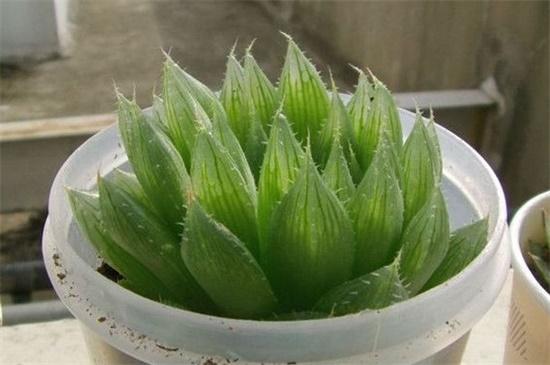
水晶掌四季养护要点
1、春季养殖
水晶掌在春季的阶段会进入短暂的休眠状态,此时需要停止浇水,可按照见干见湿的原则及时的补水,进入5月份植株会恢复生长,此时可以每隔3天的时间浇水一次,同时追施一次有机肥,促进水晶掌的生长。
2、夏季养护
在水晶掌的四季养护要点中夏季养护也非常的重要,夏季虽然温度比较高,但是植株处于生长阶段,此时需要及时的进行补水,可在每日清晨将土壤浇透,并在中午的时候喷洒清水一次,提高湿度环境,将温度降低到15℃左右,并注意遮阴防晒。
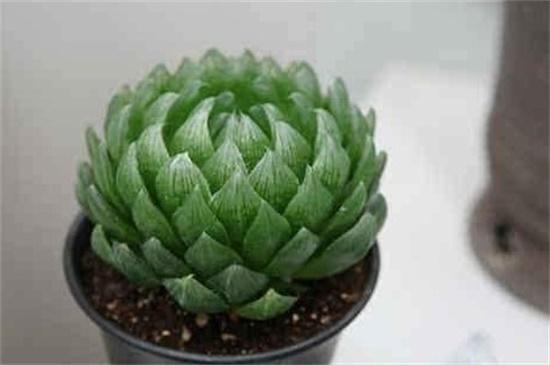
3、秋季养护
秋季水晶掌也会进入休眠,直至10月份的时候才会恢复生长,所以在这个阶段需要按照干湿交替的原则进行浇水,10月份之后可每隔2~4天的时间浇水一次,同时进行一次翻盆处理,促进根系的生长。
4、冬季养护
水晶掌在冬季的时候会进入休眠的状态,此时对于水分以及养分的要求减少,可每隔半个月的时间浇水一次,使土壤处于湿润的状态,同时增加光照时间,将其放置在有光的环境中,并把温度控制在20℃左右,方可使其安全越冬。

水晶掌四季养护要点
1、春季养殖
水晶掌在春季的阶段会进入短暂的休眠状态,此时需要停止浇水,可按照见干见湿的原则及时的补水,进入5月份植株会恢复生长,此时可以每隔3天的时间浇水一次,同时追施一次有机肥,促进水晶掌的生长。
2、夏季养护
在水晶掌的四季养护要点中夏季养护也非常的重要,夏季虽然温度比较高,但是植株处于生长阶段,此时需要及时的进行补水,可在每日清晨将土壤浇透,并在中午的时候喷洒清水一次,提高湿度环境,将温度降低到15℃左右,并注意遮阴防晒。

3、秋季养护
秋季水晶掌也会进入休眠,直至10月份的时候才会恢复生长,所以在这个阶段需要按照干湿交替的原则进行浇水,10月份之后可每隔2~4天的时间浇水一次,同时进行一次翻盆处理,促进根系的生长。
4、冬季养护
水晶掌在冬季的时候会进入休眠的状态,此时对于水分以及养分的要求减少,可每隔半个月的时间浇水一次,使土壤处于湿润的状态,同时增加光照时间,将其放置在有光的环境中,并把温度控制在20℃左右,方可使其安全越冬。
1
1
文章
莹723
2020年11月03日

How could we not love Squash? It grows in many different flavors and textures, and just keeps producing and producing.
Winter squash need tons of room to stretch because their vines sprawl 10 to 15 feet in every direction; train the plants up a trellis or fence to conserve space. Harvest winter squash when the rind can’t be pierced with your thumbnail, around the time when the vines wither or even right after the first light frost.

1.Acorn Squash
Shaped like its namesake, these popular winter squash are reliable performers. They’re best baked or stuffed.
Types of Acorn Squash: Honey Bear, Jester

2.Buttercup Squash
These easy-to-grow, turban-shaped squash store well into late winter and are buttery-sweet and satiny when baked and mashed. Bake, puree, and add olive oil and romano cheese for an out-of-this-world sauce to toss with pasta.
Types of Buttercup Squash: Burgess, Bonbon

3.Butternut Squash
Butternuts are typically cylindrical with a bulb-shaped end and a classic, tan rind. You’ll need a few weeks of storage for the flavor to develop, but they last for months and months. They are prolific producers! Bake, sauté, or add to stews.
Types of Butternut Squash: Honeybaby, Waltham
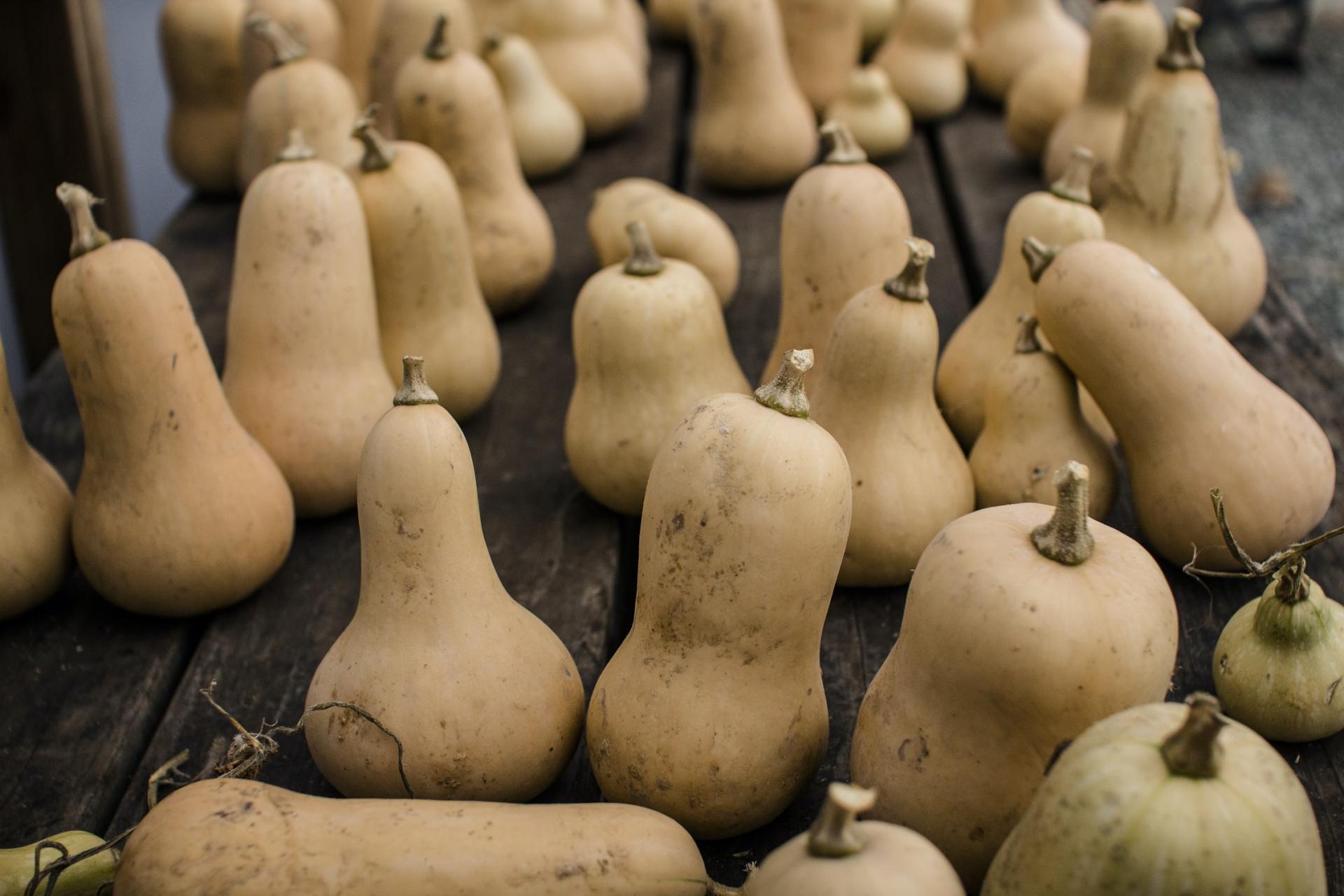
4.Delicata Squash
This heirloom variety has cream and green-striped oblong fruits about three inches wide and six inches long. They’re extremely tender, with a flavor reminiscent of sweet potatoes. And unlike many winter squash, the rind is edible. Heads up: They don't store quite as long as some of the other winter squashes.
Types of Delicata Squash: Bush Delicata

5.Dumpling Squash
These multi-colored squashes with a squat little shape are both pretty and edible. They’re prolific producers, and they can be baked, grilled, steamed, or stuffed.
Types of Dumpling Squash: Sweet Dumpling, Carnival

6.Hubbard Squash
These squash, popular in New England, have a tough, bumpy rind and range in color from bright orange to a gorgeous aqua-blue color. Some varieties weigh in at 12 to 15 pounds each! Roast the medium-sweet flesh, or chunk it for stews.
Types of Hubbard Squash: Red Kuri, Blue Ballet

7.Kabocha Squash
These Japanese squash are similar in appearance to a buttercup, with a flavor that’s reminiscent of sweet potatoes. Bake, steam, or purée in soups.
Types of Kabocha Squash: Sunshine, Hokkori

8.Pumpkin Squash
Pumpkins actually are a type of winter squash. While some varieties are not particularly tasty, and are grown for carving, others are quite sweet! Bake, steam, put in stews, and roast the seeds, or of course make a pumpkin pie. They're easy to grow!
Types of Pumpkin Squash: Pepitas, Super Moon, Hijinks

9.Spaghetti Squash
These oblong-shaped squash have stringy flesh you can scrape out after cooking to create spaghetti-like strands. Use as a pasta substitute or in soups.
Types of Spaghetti Squash: Sugaretti, Tivoli

Winter squash need tons of room to stretch because their vines sprawl 10 to 15 feet in every direction; train the plants up a trellis or fence to conserve space. Harvest winter squash when the rind can’t be pierced with your thumbnail, around the time when the vines wither or even right after the first light frost.

1.Acorn Squash
Shaped like its namesake, these popular winter squash are reliable performers. They’re best baked or stuffed.
Types of Acorn Squash: Honey Bear, Jester

2.Buttercup Squash
These easy-to-grow, turban-shaped squash store well into late winter and are buttery-sweet and satiny when baked and mashed. Bake, puree, and add olive oil and romano cheese for an out-of-this-world sauce to toss with pasta.
Types of Buttercup Squash: Burgess, Bonbon

3.Butternut Squash
Butternuts are typically cylindrical with a bulb-shaped end and a classic, tan rind. You’ll need a few weeks of storage for the flavor to develop, but they last for months and months. They are prolific producers! Bake, sauté, or add to stews.
Types of Butternut Squash: Honeybaby, Waltham

4.Delicata Squash
This heirloom variety has cream and green-striped oblong fruits about three inches wide and six inches long. They’re extremely tender, with a flavor reminiscent of sweet potatoes. And unlike many winter squash, the rind is edible. Heads up: They don't store quite as long as some of the other winter squashes.
Types of Delicata Squash: Bush Delicata

5.Dumpling Squash
These multi-colored squashes with a squat little shape are both pretty and edible. They’re prolific producers, and they can be baked, grilled, steamed, or stuffed.
Types of Dumpling Squash: Sweet Dumpling, Carnival

6.Hubbard Squash
These squash, popular in New England, have a tough, bumpy rind and range in color from bright orange to a gorgeous aqua-blue color. Some varieties weigh in at 12 to 15 pounds each! Roast the medium-sweet flesh, or chunk it for stews.
Types of Hubbard Squash: Red Kuri, Blue Ballet

7.Kabocha Squash
These Japanese squash are similar in appearance to a buttercup, with a flavor that’s reminiscent of sweet potatoes. Bake, steam, or purée in soups.
Types of Kabocha Squash: Sunshine, Hokkori

8.Pumpkin Squash
Pumpkins actually are a type of winter squash. While some varieties are not particularly tasty, and are grown for carving, others are quite sweet! Bake, steam, put in stews, and roast the seeds, or of course make a pumpkin pie. They're easy to grow!
Types of Pumpkin Squash: Pepitas, Super Moon, Hijinks

9.Spaghetti Squash
These oblong-shaped squash have stringy flesh you can scrape out after cooking to create spaghetti-like strands. Use as a pasta substitute or in soups.
Types of Spaghetti Squash: Sugaretti, Tivoli

0
0







